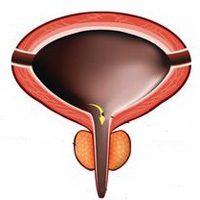Effect of bladder dysfunction on development of depression and anxiety in Parkinson’s disease

Accepted: June 25, 2021
All claims expressed in this article are solely those of the authors and do not necessarily represent those of their affiliated organizations, or those of the publisher, the editors and the reviewers. Any product that may be evaluated in this article or claim that may be made by its manufacturer is not guaranteed or endorsed by the publisher.
Authors
Objectives: Parkinson's disease (PD) often presents with movement disorder. However, besides motor complaints, there are many complaints such as anxiety, depression, urinary complaints and constipation. The aim of this study was to investigate whether neurogenic lower urinary dysfunction (NLUD), which is frequently seen in PD, has an effect on the development of anxiety and depression in these patients.
Materials and methods: The study included 32 males (66.6%) and 16 females (33.3%); in total 48 subjects were registered. For the diagnosis and severity of PD, the UK Parkinson's Disease Society Brain Bank Criteria, Unified Parkinson's Disease Rating Scale (UPDRS) and the Hoehn-Yahr scale were used. Urological evaluation was performed using history, physical examination, laboratory tests and standard forms such as IPSS and OAB-V8.
Results: There was no difference between the genders in terms of duration, severity and NLUD (p > 0.05). The incidence of anxiety and depression in PD patients was 62.8% and 72.1%, respectively. The prevalence of NLUD was 67.4% and depression and anxiety was found to increase (1.06 and 1.28 times, respectively) in relation to NLUD. In particular, there was a relationship between storage lower urinary tract symptoms and anxiety and depression development (p < 0.05).
Conclusions: As expected, it was found that the incidence of NLUD, anxiety and depression was increased in PD. In addition, NLUD was found to be a risk factor for the development of anxiety and depression. Therefore, it is concluded that NLUD, which can potentially cause important complications, as well as motor complaints, should be closely monitored and treated in PD patients.
How to Cite
PAGEPress has chosen to apply the Creative Commons Attribution NonCommercial 4.0 International License (CC BY-NC 4.0) to all manuscripts to be published.

 https://doi.org/10.4081/aiua.2021.3.336
https://doi.org/10.4081/aiua.2021.3.336



